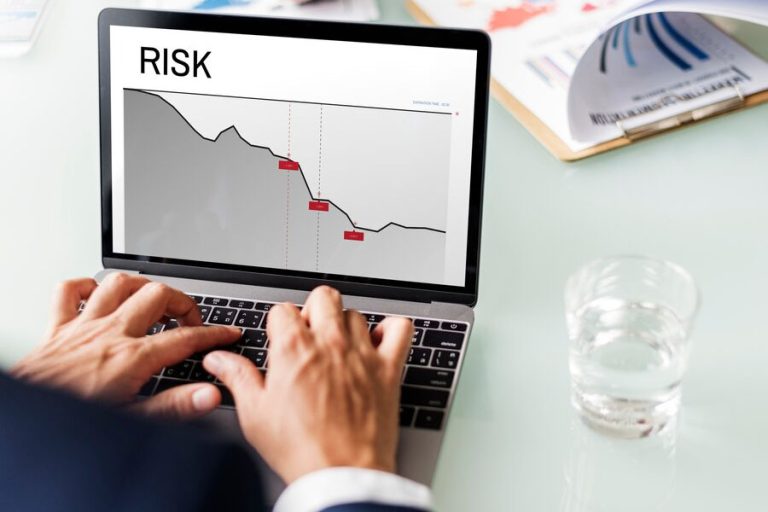A Comprehensive Guide to Forex Risk Management

Forex trading offers immense opportunities for profit, but it also comes with inherent risks. Successful traders understand the importance of managing these risks effectively. In this guide, we will get into the fundamentals of forex risk management, providing valuable insights and strategies to help traders get through the changing currency markets with confidence.
Understanding Forex Risk Management
Forex risk management involves a series of proactive measures aimed at mitigating potential losses resulting from exchange rate fluctuations. While trading in the forex market presents opportunities for substantial gains, it also exposes traders to significant risks. Therefore, implementing a risk management strategy is essential for safeguarding capital and ensuring long-term success.
Navigating Forex Trading Risks: Strategies for Success
Forex trading risks can stem from inaccuracies in market analysis, unexpected events, and human errors.
Inaccurate market analysis and forecasts can lead to losses, highlighting the importance of monitoring economic indicators, central bank policies, and major news events. It’s crucial for traders to verify information from reliable sources rather than blindly following media reports or expert opinions.
External factors like force majeure events such as political decisions, natural disasters, or market shocks can significantly impact currency markets, necessitating vigilance and adaptability in trading strategies.
Human elements such as stress, fatigue, and distraction can adversely affect trading performance. Practicing self-awareness and effective stress management techniques are essential for maintaining focus and decision-making clarity in forex trading.
Optimizing Financial Management in Speculative Trading
Managing finances effectively is paramount in speculative trading, and adhering to certain general principles can significantly contribute to success. Many newcomers to the trading arena unfortunately experience losses before understanding the significance of financial management. Let’s explore some key guidelines:
1. Craft a Detailed Trading Plan:
Developing a clear and comprehensive trading plan is imperative prior to initiating any trades. This plan should outline entry and exit points, target yields, and acceptable loss thresholds. Avoid haphazard and impulsive trading behaviors, as they often result in undesirable outcomes.
2. Focus on High Liquidity Assets:
Concentrate on trading assets with robust liquidity to minimize risk. Favor established currencies such as the Euro, USD, and Yen in forex, as well as leading market movers in commodities and stocks. While exotic currencies and volatile assets may present opportunities, exercise caution and assess context carefully.
3. Identify Strong Pivot Points:
Exercise patience and discretion when selecting entry points for trades. Utilize indicators and oscillators to identify robust pivot points on charts, but acknowledge that this skill requires experience and intuition to master effectively.
4. Opt for Longer Timeframes:
Prioritize longer-term trading strategies over short-term approaches, such as scalping. Position trading, where positions are held for the long or middle term, offers a more sustainable approach. Aim for profit margins that substantially exceed commission costs and avoid chasing every market fluctuation.
5. Practice Value Investing:
Use the principle of buying low and selling high, while acknowledging the inherent unpredictability of market movements. Utilize forex market analysis to inform trading decisions, but remain skeptical of purported foolproof strategies. Test new approaches in demo accounts before implementing them in live trading environments.
6. Implement Stop Losses Wisely:
Integrate stop loss orders into your trading strategy to manage risk effectively. However, exercise caution to avoid overreliance on stop losses, as indiscriminate use may result in premature closures and unnecessary losses. Tailor stop loss distances to align with your individual trading style and risk tolerance.
7. Allow Profits to Grow:
Resist the temptation to prematurely close profitable positions. Instead, exercise patience and allow profits to accrue, while remaining vigilant for signs of impending trend reversals. Avoid the common pitfall of securing small profits while allowing losses to escalate.
8. Maintain Adequate Free Margin:
Ensure that sufficient free margin is maintained at all times to mitigate the risk of margin calls. Avoid making impulsive decisions driven by emotions, as they often lead to detrimental outcomes in trading scenarios.
By adhering to these fundamental principles of money management, traders can enhance their chances of success and mitigate potential losses in speculative trading endeavors.
Key Components of Forex Risk Management
1. Assessing Risk Appetite:
Determining one’s risk tolerance is a fundamental aspect of effective forex risk management. Traders must evaluate how much capital they are willing to risk on each trade, considering factors such as volatility, liquidity, and personal financial goals. Establishing a clear understanding of risk appetite helps traders avoid overexposure and maintain discipline in their trading approach.
2. Position Sizing:
Selecting the appropriate position size is crucial for managing risk in forex trading. By calculating the optimal trade size based on factors such as account balance, risk percentage, and pip value, traders can limit potential losses while maximizing profit potential. Adhering to proper position sizing principles ensures prudent capital management and enhances overall risk-adjusted returns.
3. Implementing Stop Losses:
Utilizing stop loss orders is a cornerstone of effective risk management in forex trading. These predefined price levels act as a safety net, automatically closing out trades when market conditions move against the trader’s position. By setting stop losses based on technical analysis and risk-reward ratios, traders can mitigate downside risk and preserve capital during adverse market conditions.
4. Managing Leverage:
Leverage amplifies both profits and losses in forex trading, making it a powerful yet double-edged sword. While leverage enables traders to control larger positions with a relatively small amount of capital, it also magnifies the potential for significant losses. Therefore, exercising caution and employing conservative leverage ratios is essential to avoid excessive risk-taking and potential margin calls.
5. Emotion Management:
Controlling emotions is a critical aspect of successful forex risk management. Emotions such as greed, fear, and impatience can cloud judgment and lead to impulsive decision-making, ultimately undermining trading performance. By maintaining emotional discipline and adhering to a well-defined trading plan, traders can mitigate psychological biases and make objective, rational trading decisions.
Conclusion
Forex risk management is essential for navigating the complexities of the currency markets and achieving long-term trading success. By understanding and implementing key risk management principles such as assessing risk appetite, proper position sizing, utilizing stop losses, managing leverage, and controlling emotions, traders can reduce downside risk and enhance their profitability over time. Remember, disciplined risk management is the cornerstone of sustainable trading performance in the dynamic world of forex.







